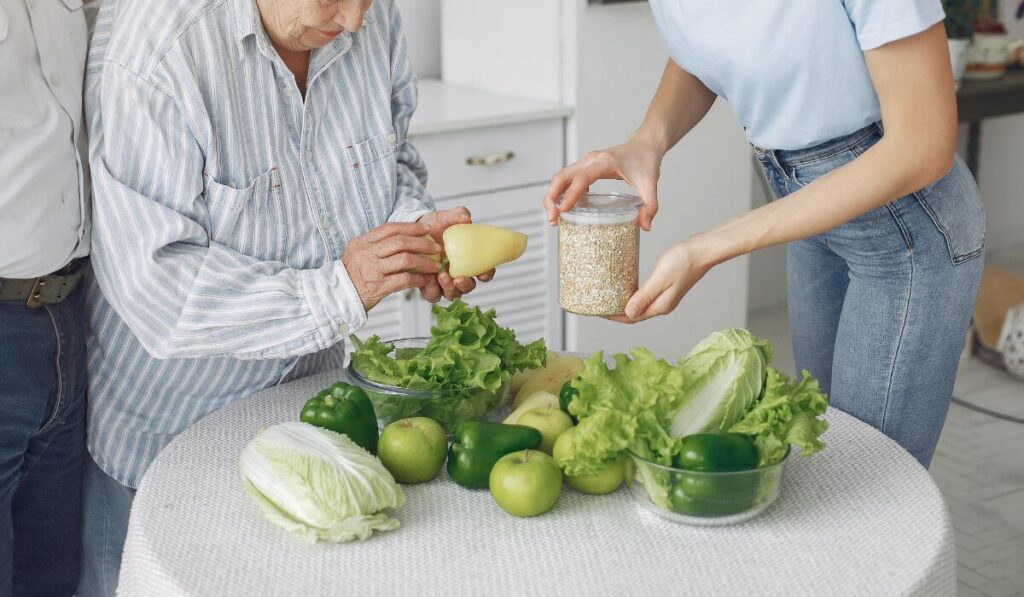As we age, staying healthy and maintaining a comfortable weight becomes more challenging. This is because metabolism slows down, mobility often decreases, and appetite may diminish—factors that all make it more difficult for the elderly to lose weight. The good news is that eating smart—particularly by increasing vegetable consumption—can be highly beneficial. In this guide, we’ll discuss the healthiest vegetables for weight loss and explain how older adults can benefit from having easy, unprocessed choices available on a daily basis.
Why Older Adults Need the Healthiest Vegetables for Weight Loss
As a person gets older, notably, muscle mass weakens and body fat builds up. Consequently, overweight and obese individuals aged 60 years and above are more prone to developing diseases like diabetes, high blood pressure, and heart disease, according to the CDC.
Vegetables aren’t only low-calorie—nothing is packed with more fiber, water, vitamins, and antioxidants than vegetables that suppress hunger, regulate digestion, and overall health. In the elderly, the right vegetables result in weight loss without sacrificing energy or muscle.
How Vegetables Support Healthy Weight Loss After 50
Healthiest Vegetables for Weight Loss is not induced by depriving the body of food—it is achieved through consuming the right food. Vegetables are ideal for the elderly because:
- High Fiber: First of all, fiber slows down digestion time and keeps you fuller for longer. As a result, this reduces snacking.
- Low Calorie, High Volume: In addition, vegetables fill your plate without providing many extra calories.
- Easy on the Digestive System and Hydrating: Moreover, most vegetables are water-filled, easy on the digestive system, and excellent for hydrating—which is especially important for older adults.
- Nutrient-Rich: Finally, they are filled with essential nutrients, including vitamins A, C, and K, as well as minerals like potassium and magnesium.
Top 10 Healthiest Vegetables for Weight Loss in Older Adults

Here’s a list of the healthiest vegetables for weight loss, especially suited for older adults:
| Vegetable | Key Benefits |
| Spinach | Low in calories; rich in iron and fiber; supports red blood cells and digestion |
| Broccoli | High in vitamin C and calcium, it aids bone health and regulates blood sugar |
| Carrots | High in beta-carotene and fiber; great for hunger control and snacking |
| Zucchini | Hydrating and low-calorie, perfect for stews and stir-fries |
| Kale | Rich in antioxidants and fiber, it supports digestion and reduces inflammation |
| Cabbage | Affordable, fiber-rich; promotes fullness and regular digestion |
| Cauliflower | Low-carb alternative; filling and versatile in cooking |
| Green Beans | An iron, fiber, and protein source that is simple to prepare and digest |
| Bell Peppers | Rich in vitamin C, it boosts immunity and adds color and flavor to meals |
| Cucumbers | More than 95% water; provides hydration and fullness with few calories. |
Adding the Healthiest Vegetables to Daily Meals
Not what you eat, but how often and how easily you can fit it into your life. These are simple steps older adults can take to make more vegetables a part of everyday life:
- Your morning omelet, for example, might benefit from the addition of spinach, bell peppers, and tomatoes.
- Similarly, you can make hearty soups or stews by adding zucchini, green beans, and carrots.
- Alternatively, try steaming or sautéing vegetables in olive oil – it’s easy, healthy, and gentle on digestion.
- Mix green leaves into smoothies – an excellent choice when chewing is challenging.
- Stir-fry with lots of various colorful vegetables and delicate seasonings.
Even slight changes, such as cauliflower rice rather than rice or snacking on raw carrots, will be worth it in the long term.
Cooked vs. Raw: What Works Best for Older Adults?
Both raw and cooked vegetables possess advantages, but in elderly people, cooking vegetables might be better as it is more digestible. It also has the secondary advantage of making some nutrients more absorbable. For instance:
- Cooked carrots contain more easily absorbed beta-carotene.
- Steamed spinach is easier to absorb and minimizes oxalates.
But don’t cut raw out entirely. Cucumber, tomato, and bell pepper salads provide crunch and moisture to the diet. Eat a combination of raw and cooked foods, depending on your preferences and ease of digestion.
Vegetables to Avoid or Limit in a Senior Weight Loss Diet
Take advantage of most vegetables, but there are a few that might have to be in restricted quantities:
- White potatoes are highly starchy, producing a rapid boost of blood sugar.
- Corn will be consumed in quantity and result in an elevation of blood sugar.
- Canned vegetables – “Low sodium” or salty unless washed.
Use non-starchy vegetables, and check labels if buying prepackaged.
Simple and Tasty Vegetable Recipes for Healthy Senior Living
Cook for two or one? Look at these easy recipes:
- Broccoli & Cauliflower Stir-Fry: Stir-fry lightly in olive oil and garlic.
- Cabbage Soup: Low-calorie, healthy soup that is simple to prepare in bulk.
- Zucchini Noodles: Spiral and cover with tomato sauce or olive oil.
- Roasted Carrots & Bell Peppers: Toss and season with herbs for a sweet, tender bite.
Exercises are simple to chew, digest, and prepare—ideal for seniors who have an appetite to eat smart.
Grocery Shopping Tips for Seniors: Choosing Vegetables
- Purchase in-season, fresh produce to save money and improve quality.
- Go for pre-cut or frozen if chopping is difficult.
- For fresh and reasonably priced vegetables, check out your local farmers’ markets.
- Plan simple meals around 2–3 vegetables per week to reduce waste and prep time.
Keep your pantry simple, and don’t be afraid to experiment with new vegetables each week.
Vegetables and Gentle Exercise for Weight Loss
A balanced diet is a powerful medicine, but coupled with low-key physical activity such as walking, chair yoga, or stretching, it can certainly produce maximum results.
Such research in The Journals of Gerontology showed that older adults over 65 on vegetarian diets and who walked for merely 30 minutes a day actually lost more body weight and even worked out more than individuals who only dieted.
Exercise during the day and eat mindfully.
Conclusion
For older adults, the key to improved health isn’t about fad diets or finicky plans. By emphasizing the top weight-loss vegetables, older adults can control weight, feel more energy, and improve overall well-being. Smart eating is actually making smart selections of healthy, easy-to-digest foods with long-term benefits, and vegetables are the perfect place to start.
FAQ’s
What are the best vegetables to eat daily for senior Healthiest Vegetables for Weight Loss?
Leafy vegetables such as kale, spinach, and collard greens. Add broccoli, cauliflower, and Brussels sprouts for weight, fiber, and vitamins.
Are cooked vegetables better for older adults than raw?
Yes, the vegetables are more chewable and more easily digested when they are cooked, which is a benefit to older individuals. Some nutrients become more accessible during cooking, like beta-carotene in carrots.
How many servings of vegetables should older adults eat per day?
Guesstimate 3 to 5 servings a day. That is 1 cup raw greens or ½ cup cooked vegetables per serving. Mix and vary to get the best nutrition.
Can I lose weight just by eating more vegetables?
Vegetables muffle calories and suppress hunger, but to achieve full advantages, pair them up with some form of physical activity such as walking or stretching to couple overall wellness and weight loss.

